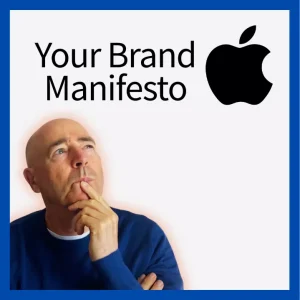Thought Leadership Content Marketing – Three Levels of Planning and Strategy
Content Marketing is the sharing of ideas to help readers make informed decisions.
It’s a perfect fit for Thought Leaders because that’s what they do – share ideas.
But Content Marketing can be a big waste of time if you don’t do it the right way.
In this post, we’ll focus on the three crucial levels of Thought Leadership Content Marketing you can use to attract your ideal clients more easily today.
The Three Levels of Thought Leadership Content Marketing
Now let’s look at the Three Levels of Thought Leadership Content Marketing.
First, we want to define our terms.
- A Thought Leader is someone who earns money from sharing their ideas.
- Content Marketing is sharing ideas to help readers make informed decisions.
But how can you create the right content quickly, easily and consistently?
The key is a clear strategy. You don’t want to be reinventing the wheel every time you create content.
Instead, you want to have a tried and trusted framework to turn to that tells you what to create, how to create it and where to publish it.
This is the framework I personally use. And I’ll share my most recent example around Anywhere Experts to show you how it works.
This Content Marketing Strategy has three levels:
- An Ideal – to make people care about your content
- A Philosophy – to share how the world works
- The Content – to be the trusted guide
To gain the most from this post, share it with your colleagues and discuss how you can use Content Marketing to showcase your thought leadership and attract your ideal clients.
1 – Ideal: make people care
Our first level of Thought Leadership Content Marketing is your brand ideal.
Thought Leaders sell their ideas. And perhaps the biggest idea of all is their personal brand.
But like ideas, brands are not tangible or physical like a computer or a car. How do find the right brand idea?
We need to connect our area of thought leadership to a human ideal – an emotional goal – to make people care about our message.
I shared this in the previous post, Thought Leadership Marketing.
As a quick summary:
- We are always buying and selling a better future.
- Our clients and customers are asking themselves: How will having this help me be better off in the future?
- In Jim Stengel’s book, Grow he identified five brand ideals that were used by 50 of the world’s top brands. These are:
- Enable connection
- Incite joy
- Inspire exploration
- Evoke pride
- Impact society
- The critical question to ask yourself is: What is the deeper benefit of what I provide for my clients?
For example, Anywhere Experts is all about helping business experts package up what they know so they earn money from anywhere. The deeper ideal around this is freedom – the freedom to choose how best to work and live. This becomes the central narrative or the overarching theme of all my content. It’s also my motivation in sharing ideas in this video – I want to give you choices and freedoms about how you can work and live.
2 Business Philosophy: how the world works
Our second level of Thought Leadership Content Marketing is your business philosophy.
Thought Leaders sell their ideas. And while you can have many experts on the same topic eg leadership or branding, what separates one Thought Leader from the next is their philosophy about how the world works.
But philosophy can be a vague and intellectual thing if you approach it in the wrong way.
How can we create and share this in a simple way, so people get it quickly and easily?
The key is to use a simple structure like a rule-based manifesto that shares your philosophy as a set of easy-to-read bullet-point statements.
Let me share my example for Anywhere Experts. The context is about how we work and live and the ideal I mentioned in the previous section is ‘freedom’. This means having choice and autonomy about how we work and live.
The Seven Freedoms of Work
- Earn enough money
- Do meaningful work
- Work your best way
- Work with people you care about
- Attract your ideal clients
- Work in your ideal location
- Have a social impact
These seven points become the topics for all my content. For instance, in this video I’m sharing about Thought Leadership Content Marketing to help you with point number five, to attract your ideal clients.
To come up with content ideas I simply need to find a subject that fits inside any of these seven ideas and speak about it from the theme of how it adds ‘freedom, choice and autonomy’ to your work and your life.
3 Content Creation: be the trusted guide
Our third level of Thought Leadership Content Marketing is the content you create and share.
Content Marketing is the sharing of ideas to help readers make informed decisions. It’s not about direct selling. But you might ask, if you’re not selling through your content, then what is your intention?
The goal is to become a trusted guide by educating and informing your readers.
Think about this like you would make friends. When we first meet, we need to get to know and trust each other. As our relationship deepens, we can then ask for help from each other. You don’t just walk up to a stranger today and ask them to help you move house tomorrow. That’s not going to work.
If you trust me to guide you when you’re not ready to buy, then you might give me a call later when you are.
We talked about this in our earlier post called Share What You Know About Business Success – to build trust you need to show up consistently and help others with your ideas.
Your Content Marketing Plan – Four Questions
The key to being consistent and reliable with your Content Marketing is to have a clear repeatable plan. There are four key questions to answer:
1 What to publish?
Hopefully, the template of your philosophy and brand ideal solves this.
2 How to create?
Are you going to write, record, interview or design? The best way to answer this is ‘how do you want to show up or be positioned in front of your audience?’ For instance, it positions you well as a speaker if you are consistently seen presenting on camera.
3 How often to create?
I work off a weekly schedule based on one video and blog post each week. You might do more or less.
4 Where to publish?
Ideally, you’ll publish where your audience is hanging out. My big tip here is to pick one channel and do that well before adding other channels.
Summary: Thought Leadership Content Marketing
Let’s wrap up what we’ve covered here.
- Content Marketing is sharing ideas to help people make informed decisions. This suits Thought Leaders who are in the business of sharing ideas to help their clients.
- To create great content that helps attract our ideal clients we need to follow a three-part strategy:
- 1 Ideal – make people care by connecting your area of thought leadership to a human ideal or emotion.
- 2 Philosophy – differentiate yourself from other thought leaders in the same topic area by sharing your personal take on how the world works.
- 3 Content – rather than sell directly through your content, you want to be the trusted guide that people turn to when they want to make an important decision.
How do you gain maximum value from your Thought Leadership Content Marketing?
It can be very satisfying to spend time and effort thinking through a big idea, sharing it with your clients and colleagues and receiving positive feedback – even a round of applause.
But it can take a lot of time to create good quality content.
Which raises the question, how do you gain maximum value from your effort?
The key to getting the most out of your content is to re-use and share the same idea in multiple ways. There are two main strategies here.
1 Slice and Dice
Slice and Dice is the first strategy. It’s how you make and share a pizza. You start with the whole and then you cut it into smaller pieces.
Video is called the king of content because it can be sliced and diced into other formats. For instance, once you have recorded your video, you can strip out the audio for a podcast and then transcribe the audio into a blog post.
And one long blog post of 1000 words can be sliced into three or smaller articles.
2 Stack and Build
Stack and Build is the second strategy.
It’s the opposite of slice and dice – you create a series of smaller items that you later combine into a bigger item.
For me, I’m creating a series of individual videos. Later I might combine these into one big course or collect all the blog posts and put them into a book.
Example: Anywhere Experts
Here’s my example for Anywhere Experts to show how I’m currently re-using my content.
Each week, I publish one video, one blog post, one e-newsletter and three posts on Linked In. That sounds like a lot. But the reality is I write one script for the video. This is also used as the full blog post. Then it is sliced into a summary for the e-newsletter and sliced again into three posts for LinkedIn. It’s the same content used four different ways. And I repeat this process each week.
Plus, I also use the video for my group coaching. I can either say, watch this video first and then we’ll apply it to your situation. Or, at the end of a coaching session, I can say, go and watch this video for more information.
More
For more on Thought Leadership Content Marketing check out these previous posts:
- Thought Leadership Meaning and Definition
- Thought Leadership Marketing
- Share What You Know About Business Success










